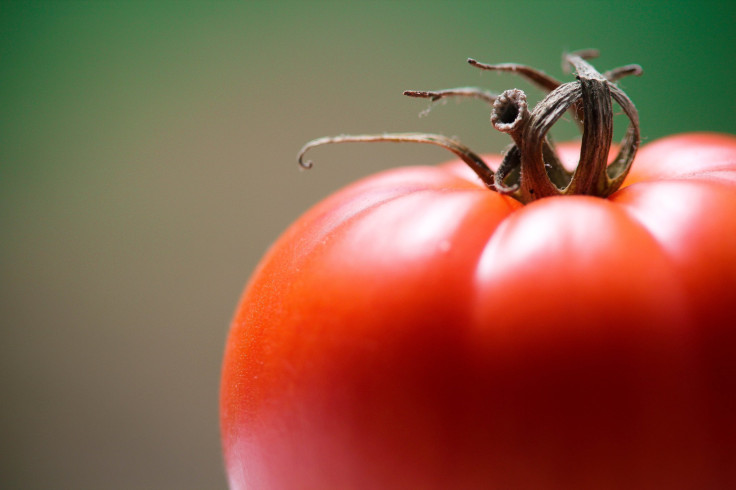Super Tomatoes With Extra Heart-Healthy Antioxidants: The Bright Future Of Agricultural Engineering

Put down the corkscrew, because a single tomato will soon have enough disease-fighting compounds to outweigh the health benefits of cases of red wine. Researchers from John Innes Centre in the UK have figured out how to grow super tomatoes packed with heart-healthy antioxidants. Their experiment, published in the journal Nature Communications, demonstrates the power and future of plant engineering.
"Medicinal plants with high value are often difficult to grow and manage, and need very long cultivation times to produce the desired compounds," said the study’s co-author Dr. Yang Zhang, a scientist at the John Innes Centre, in a press release. "Our research provides a fantastic platform to quickly produce these valuable medicinal compounds in tomatoes. Target compounds could be purified directly from tomato juice."
For the study, researchers honed in on a protein called AtMYB12, which is found in the small flowering plant Arabidopsis thaliana — common in most UK gardens. They explained the protein works like a faucet tap that either increases or decreases the amount of compounds that are produced in a plant, depending on how much AtMYB12 is present.
Once they added the protein to a tomato plant, it activated phenylpropanoids, a type of polyphenol proven to play a role in preventing diseases like cancer and heart disease. These polyphenols are similar to resveratrol, another polyphenol found in wine, which has been shown to prevent damage to blood vessels, lower bad cholesterol, and, in mouse studies, protect from obesity and diabetes. Once the tomatoes had the protein in them, they began dedicating more energy and carbon to making large amounts of phenylpropanoids.
One supercharged tomato contained the same amount of polyphenols as 50 bottles of red wine, the study found. The benefits of resveratrol have been highly publicized and studied. Found in the skin of red grapes, they provide many benefits to the body when concentrated within a bottle of wine. However, according to a 2010 study, humans would have to drink about 40 liters of wine a day to reap these benefits — not only is this not possible, but it would also negate any sort of benefit and cause harm. There are over 4,000 different types of polyphenols like the ones found in red wine, and many of them provide health benefits to varying degrees. The researchers here have been able to trigger the one in tomatoes that beats out red wine. It may not be as fun to bite into a tomato as it is to drink a few bottles of red wine, but it’s certainly easier.
Tomatoes are relatively easy to grow in large quantities as well, making them a valuable crop, especially when supercharged with heart-healthy antioxidants. The tomatoes can be harvested and juiced, and then their valuable compounds can be extracted for use as a nutritional or medicinal source. Zhang and his colleagues believe they could also design other types of supercharged plants with different types of beneficial compounds, like terpenoids and alkaloids, which are known to relax muscles, help with depression, and reduce inflammation, among other benefits.
"Our study provides a general tool for producing valuable phenylpropanoid compounds on an industrial scale in plants, and potentially production of other products," said the study’s lead author Cathie Martin, in a press release. "Our work will be of interest to different research areas including fundamental research on plants, plant/microbe engineering, medicinal plant natural products, as well as diet and health research."
Source: Zhang Y, Butelli E, Alseekh S, et al. Multi-level engineering facilitates the production of phenylpropanoid compounds in tomato. Nature Communications. 2015.



























